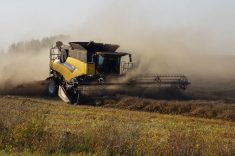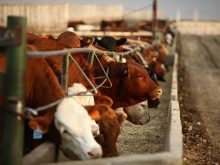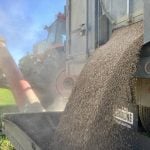MarketsFarm – There was a first for canola on Dec. 29, in that three contracts exceeded C$1,000 per tonne at the same time. In the sharp upswing during that Wednesday morning on the Intercontinental Exchange, the nearby January, March and May canola contracts respectively reached new highs with the former hitting the daily limit of C$60 per tonne a few times.
Such should not be too surprising with holiday trading, as lower volumes than usual, meaning pretty much anything can happen.
For an analyst such as Errol Anderson of ProMarket Communications in Calgary, Alta., getting a bead on where canola is likely going is quite difficult. He said canola could go higher into the New Year, “but then it gets bad hair day, plunging below $1,000 again.”
Read Also

U.S. grains: Soybeans hit six-week low as Brazilian harvest looms; corn, wheat sag
Chicago | Reuters – Chicago soybean futures fell to six-week lows on Friday as worries about slowing export demand for…
A big influence on canola and other edible oils are the dry conditions throughout most of Argentina as well as central and southern Brazil. So far things are shaping up to be a repeat of last year with a La Nina generating dry conditions in the southern half of the continent. Meanwhile, wet conditions now prevail in much of northern Brazil, also affecting soybean and corn crops.
Rain has been forecast next week for the dry areas, which if it falls, will benefit struggling soybean and corn crops. In turn that would have a significant effect on the markets. Anderson suggested that soybeans on the Chicago Board of Trade would “blow a tire” and likely bring down corn with it. In turn, the spillover could weaken canola values.















